Academic Policy Paper Series, no. 6, January 2025
TikTok as a News Platform in the Era of Global Citizen Journalism: The Case of the 2024 BRICS Summit
Olga Logunova
January 14, 2025
BRICS, the international alliance of Brazil, Russia, India, China, and South Africa, has long stood as a symbol of emerging multipolarity in global politics. This year’s BRICS summit, held in Kazan on October 22–24, took on a particularly notable dimension: For the first time, new member states—Iran, Egypt, Ethiopia, and the United Arab Emirates—joined the organization. BRICS-related content surged in popularity on social media, particularly on TikTok, where short-form videos transformed the summit into a global media event despite the setting of a Western-ostracized Russia.
In an era when traditional media has struggled to keep up with the rapid and decentralized flow of information, platforms like TikTok are reshaping how international news is disseminated and consumed. For many, TikTok has become more than just an entertainment platform; it’s emerging as a new kind of newsroom, especially with younger audiences like Generation Z.
News on TikTok: A New Era of Citizen Journalism
According to a study by Pulsar, mentions of TikTok as a news source soared a staggering 207% between 2020 and 2024. Independent citizen journalists now lead in engagement on TikTok, accounting for 79% of news-related content, while traditional media holds only 21%. This shift away from institutional news sources suggests a profound transformation in public trust, with many users favoring authentic, individual voices over large media organizations.
In the month around the BRICS summit (October 6–November 8), TikTok users published over 20,145 videos tagged with #BRICS, which collectively amassed an impressive 547.4 million views. Although the overall volume of views might seem modest, nearly 40% of these videos were posted within two peak days (October 24–25, i.e., the final day of the summit and the day after), hitting 200.0 million views and surpassing the engagement seen by any single traditional news story during this period. These statistics highlight TikTok's potential to amplify international events on a scale that would have been unimaginable a few years ago.
The distribution of daily number of posts and views (source: Exolyt)
In an era when traditional media has struggled to keep up with the rapid and decentralized flow of information, platforms like TikTok are reshaping how international news is disseminated and consumed. For many, TikTok has become more than just an entertainment platform; it’s emerging as a new kind of newsroom, especially with younger audiences like Generation Z.
News on TikTok: A New Era of Citizen Journalism
According to a study by Pulsar, mentions of TikTok as a news source soared a staggering 207% between 2020 and 2024. Independent citizen journalists now lead in engagement on TikTok, accounting for 79% of news-related content, while traditional media holds only 21%. This shift away from institutional news sources suggests a profound transformation in public trust, with many users favoring authentic, individual voices over large media organizations.
In the month around the BRICS summit (October 6–November 8), TikTok users published over 20,145 videos tagged with #BRICS, which collectively amassed an impressive 547.4 million views. Although the overall volume of views might seem modest, nearly 40% of these videos were posted within two peak days (October 24–25, i.e., the final day of the summit and the day after), hitting 200.0 million views and surpassing the engagement seen by any single traditional news story during this period. These statistics highlight TikTok's potential to amplify international events on a scale that would have been unimaginable a few years ago.
The distribution of daily number of posts and views (source: Exolyt)

The distribution of post share with #BRICS by countries (source: Exolyt)
European and Global South Engagement:
Expanding BRICS Influence Beyond Member States
While the BRICS summit in Kazan attracted significant attention across its member nations, the most active TikTok users discussing the event actually came from Germany, the United States, and France. German users led with 2,001 videos (11% of all BRICS-related content), followed by the United States with 1,924 videos (9%) and France with 1,785 videos (8%). Among the BRICS members, Brazil was the most active, accounting for 790 videos (4%), with notable contributions from new member the United Arab Emirates (679 videos; 3%) and Ethiopia (244 videos; 2%).
A significant group of content creators also emerged from the Global South, reflecting BRICS’s appeal beyond its immediate membership. Vietnam and Indonesia were especially active, with 1,342 videos (7%) and 1,231 videos (6%), respectively, joined by countries like Venezuela (682 videos; 3%), Thailand (813 videos; 4%), and Argentina (283 videos; 1%). This broad engagement underscores the BRICS summit's resonance across diverse regions, particularly in countries looking for alternative alliances outside of Western-dominated institutions. For these nations, BRICS represents a valuable platform for economic cooperation and multipolar political alignment.
The amount and share of posts with #BRICS by countries (source: Exolyt)
Expanding BRICS Influence Beyond Member States
While the BRICS summit in Kazan attracted significant attention across its member nations, the most active TikTok users discussing the event actually came from Germany, the United States, and France. German users led with 2,001 videos (11% of all BRICS-related content), followed by the United States with 1,924 videos (9%) and France with 1,785 videos (8%). Among the BRICS members, Brazil was the most active, accounting for 790 videos (4%), with notable contributions from new member the United Arab Emirates (679 videos; 3%) and Ethiopia (244 videos; 2%).
A significant group of content creators also emerged from the Global South, reflecting BRICS’s appeal beyond its immediate membership. Vietnam and Indonesia were especially active, with 1,342 videos (7%) and 1,231 videos (6%), respectively, joined by countries like Venezuela (682 videos; 3%), Thailand (813 videos; 4%), and Argentina (283 videos; 1%). This broad engagement underscores the BRICS summit's resonance across diverse regions, particularly in countries looking for alternative alliances outside of Western-dominated institutions. For these nations, BRICS represents a valuable platform for economic cooperation and multipolar political alignment.
The amount and share of posts with #BRICS by countries (source: Exolyt)
The two most viewed video with #BRICS (source: Exolyt)
Trending Accounts and Leading Voices for BRICS Summit News
On TikTok, a handful of accounts consistently led the conversation around the BRICS summit, with news-focused channels predominating. In the top 15 trending accounts, five were primarily news outlets, with Al Jazeera English on top. Al Jazeera’s BRICS-related posts garnered significant attention, with one of its videos achieving 250,000 likes and 6 million views (link to video). This highlights the channel's ability to amplify international issues on TikTok, where its posts routinely draw large audiences interested in geopolitical content.
Here’s a list of the five most popular news channels on TikTok for BRICS-related content:
In addition to news outlets, individual influencers also played a key role in shaping the narrative around the BRICS summit. Among them, Miguel Torruco Garza, a Mexican politician and businessman, stands out. A member of the political party Morena, which is led by ex-President Andrés Manuel López Obrador, Garza actively engages with his 1.7 million followers on TikTok. One of his videos on BRICS became the most liked in this category, amassing 964,000 likes and 11.5 million views (link to video). Such engagement helped raise awareness of BRICS in Mexico and showcased how influential figures can mobilize audiences across borders. Another of Garza's posts received 400,000 likes (link to second video).
Celebrity influencers and news outlets typically produce the high-engagement posts and are the trending accounts. While influencers like Garza drive massive engagement through their personal influence and relatability, news channels such as Al Jazeera provide structured geopolitical insights that resonate with a broad audience. These two groups play complementary roles, one drawing in audiences with personal narratives and the other providing authoritative perspectives on international issues.
Hashtags: Patterns of Engagement and Audience Targeting in BRICS TikTok Content
The hashtag graph for videos related to the BRICS summit reveals a complex network of thematic groups and engagement patterns, with several key themes and significant regional and linguistic diversity.
Hashtag relationships centered around #BRICS (source: Exolyt)
On TikTok, a handful of accounts consistently led the conversation around the BRICS summit, with news-focused channels predominating. In the top 15 trending accounts, five were primarily news outlets, with Al Jazeera English on top. Al Jazeera’s BRICS-related posts garnered significant attention, with one of its videos achieving 250,000 likes and 6 million views (link to video). This highlights the channel's ability to amplify international issues on TikTok, where its posts routinely draw large audiences interested in geopolitical content.
Here’s a list of the five most popular news channels on TikTok for BRICS-related content:
- @aljazeeraenglish
- @horizongeopolitics
- @dailynews
- @insidegeopolitics
- @truthnews
In addition to news outlets, individual influencers also played a key role in shaping the narrative around the BRICS summit. Among them, Miguel Torruco Garza, a Mexican politician and businessman, stands out. A member of the political party Morena, which is led by ex-President Andrés Manuel López Obrador, Garza actively engages with his 1.7 million followers on TikTok. One of his videos on BRICS became the most liked in this category, amassing 964,000 likes and 11.5 million views (link to video). Such engagement helped raise awareness of BRICS in Mexico and showcased how influential figures can mobilize audiences across borders. Another of Garza's posts received 400,000 likes (link to second video).
Celebrity influencers and news outlets typically produce the high-engagement posts and are the trending accounts. While influencers like Garza drive massive engagement through their personal influence and relatability, news channels such as Al Jazeera provide structured geopolitical insights that resonate with a broad audience. These two groups play complementary roles, one drawing in audiences with personal narratives and the other providing authoritative perspectives on international issues.
Hashtags: Patterns of Engagement and Audience Targeting in BRICS TikTok Content
The hashtag graph for videos related to the BRICS summit reveals a complex network of thematic groups and engagement patterns, with several key themes and significant regional and linguistic diversity.
Hashtag relationships centered around #BRICS (source: Exolyt)
The core of the network consists of the BRICS coalition itself and a web of descriptive hashtags related to member states, summit participants, and key political figures. Hashtags serve as vital tools for targeting and categorizing content on TikTok. They help the platform's algorithm to push videos to the most relevant audiences.
‘Russia’ as the Central Node in the Hashtag Network
One of the largest and most influential clusters in the BRICS-related hashtag network on TikTok revolves around Russia. Approximately 25% of BRICS-related videos mention Russia, largely due to the summit’s location in Kazan. Noteworthy is the prominence of the hashtag #Russia in English, which was the central node. This English-language hashtag connects to other key hashtags, including #VladimirPutin, #economy, #China, and #India, framing Russia as an integral global player within the multipolar BRICS alliance rather than just a regional power.
‘Russia’ as the Central Node in the Hashtag Network
One of the largest and most influential clusters in the BRICS-related hashtag network on TikTok revolves around Russia. Approximately 25% of BRICS-related videos mention Russia, largely due to the summit’s location in Kazan. Noteworthy is the prominence of the hashtag #Russia in English, which was the central node. This English-language hashtag connects to other key hashtags, including #VladimirPutin, #economy, #China, and #India, framing Russia as an integral global player within the multipolar BRICS alliance rather than just a regional power.
The piece of hashtag relationships centered around #BRICS about Russia
(source: Exolyt)
(source: Exolyt)
We also see variations such as #Россия in Russia and #Rusia in Spanish, inclusive to diverse audiences and enhancing the visibility of BRICS content. This multilingual tagging strategy allows the topic to resonate with audiences outside of Russia, particularly in Spanish-speaking states like Mexico and Venezuela, where the BRICS alliance’s perceived stance on multipolarity and resistance to Western economic dominance strike a chord.
Spanish-language hashtags, alongside those like #multipolarity and #LatinAmerica, show that BRICS is relevant in Latin America, where audiences are increasingly supportive of global alliances. TikTok thus serves to amplify the international dimension of Russia’s involvement in BRICS, with users from multiple linguistic backgrounds engaged and the appeal of BRICS as a geopolitical alternative for states across the Global South reinforced.
News Clusters: Narratives in #news and #новости
Within the broader context of BRICS-summit-related TikTok content, three significant hashtag clusters highlight the platform’s role in facilitating diverse perspectives on the summit and the BRICS alliance:
Spanish-language hashtags, alongside those like #multipolarity and #LatinAmerica, show that BRICS is relevant in Latin America, where audiences are increasingly supportive of global alliances. TikTok thus serves to amplify the international dimension of Russia’s involvement in BRICS, with users from multiple linguistic backgrounds engaged and the appeal of BRICS as a geopolitical alternative for states across the Global South reinforced.
News Clusters: Narratives in #news and #новости
Within the broader context of BRICS-summit-related TikTok content, three significant hashtag clusters highlight the platform’s role in facilitating diverse perspectives on the summit and the BRICS alliance:
- #news (English): This cluster draws attention to BRICS within the broader concept of a multipolar world. It emphasizes the alliance’s political and economic role as a supposed counterbalance to Western dominance. Content in this cluster often highlights the themes of international alliances, financial independence, and geopolitical strategy, resonating with TikTok’s global English-speaking audience. Hashtags like #worldwidenews, #internationalnews, and #breakingnews populate this cluster, positioning BRICS as part of a wider international narrative.
- #новости (Russian): The Russian-language node, dominated by the hashtag #новости, focuses on summit news as it pertains to Russia’s domestic and international policies. Here, BRICS is depicted not only as an alliance but as a symbol of Russia’s role in a multipolar world, counter to Western narratives. The consistent set of hashtags used in Russian-language content suggests an organized approach to enhance the visibility of and engagement with Russian-centric narratives.
- NATO as a counterpoint cluster: Another significant hashtag group ties BRICS content to NATO and offers an international news angle. Hashtags like #NATO, #dailynews, #worldwidenews, and #internationalnews appear in a dense configuration, positioning NATO as a counterpoint to BRICS. This hashtag network reinforces the notion of BRICS as an alternative alliance to Western-led organizations like NATO. Videos in this cluster emphasize the ideological divide between what is claimed to be the BRICS vision of a multipolar world and NATO’s traditional, Western-centric agenda, giving viewers multiple perspectives on global power structures.
The piece of hashtag relationships centered around #BRICS about news (source: Exolyt)

The piece of hashtag relationships centered around #BRICS about crypto (source: Exolyt)
The Rise of Cryptocurrency in the BRICS Agenda: A Hot Topic for TikTok Audiences
Among the various topics discussed at the recent BRICS summit, cryptocurrency stands out as particularly viral on TikTok. The summit included discussions on digital currencies and crypto assets as part of a strategy to dedollarize the economies of BRICS states. BRICS leaders expressed interest in using cryptocurrencies and central bank digital currencies to facilitate cross-border transactions and strengthen economic independence vis-à-vis the U.S. dollar. They even explored the possibility of creating a blockchain-based BRICS payments system to streamline transactions among member states.
This focus on cryptocurrency resonates strongly with TikTok’s young, tech-savvy audience, especially in regions like Latin America and Southeast Asia. For many young people, digital currencies represent innovation, independence, and an alternative to traditional financial systems, which aligns with the BRICS alliance’s declared goal of creating new, less Western-centric economic pathways.
TikTok’s Role in Democratizing News and Reshaping Global Discourse
TikTok is not just changing journalism—it is democratizing access to information and reshaping audience engagement. With a unique blend of news, humor, and personal storytelling, TikTok has created a platform where global events, such as the BRICS summit, are experienced in a fresh, relatable way. This new form of citizen journalism allows individuals to shape public discourse on major international issues, providing alternative perspectives that traditional media may overlook.
TikTok has proven to be more than just a platform for entertainment; its short-form, video-first format (typically under a minute) has become a powerful tool for disseminating news and shaping public opinion on complex international issues, such as the policies and interactions of BRICS states. The combination of short-form video, interactive content, and accessible language on TikTok enables a diverse range of voices to participate in global discourse. As we see in the case of the BRICS summit, TikTok enables news to transcend national borders, language barriers, and media monopolies, engaging audiences across the Global South, Europe, and beyond. By this logic, Twitter should have reshaped global discourse too? They have hash tags, different languages, interactive content, etc. Why is TikTok so different?
Among the various topics discussed at the recent BRICS summit, cryptocurrency stands out as particularly viral on TikTok. The summit included discussions on digital currencies and crypto assets as part of a strategy to dedollarize the economies of BRICS states. BRICS leaders expressed interest in using cryptocurrencies and central bank digital currencies to facilitate cross-border transactions and strengthen economic independence vis-à-vis the U.S. dollar. They even explored the possibility of creating a blockchain-based BRICS payments system to streamline transactions among member states.
This focus on cryptocurrency resonates strongly with TikTok’s young, tech-savvy audience, especially in regions like Latin America and Southeast Asia. For many young people, digital currencies represent innovation, independence, and an alternative to traditional financial systems, which aligns with the BRICS alliance’s declared goal of creating new, less Western-centric economic pathways.
TikTok’s Role in Democratizing News and Reshaping Global Discourse
TikTok is not just changing journalism—it is democratizing access to information and reshaping audience engagement. With a unique blend of news, humor, and personal storytelling, TikTok has created a platform where global events, such as the BRICS summit, are experienced in a fresh, relatable way. This new form of citizen journalism allows individuals to shape public discourse on major international issues, providing alternative perspectives that traditional media may overlook.
TikTok has proven to be more than just a platform for entertainment; its short-form, video-first format (typically under a minute) has become a powerful tool for disseminating news and shaping public opinion on complex international issues, such as the policies and interactions of BRICS states. The combination of short-form video, interactive content, and accessible language on TikTok enables a diverse range of voices to participate in global discourse. As we see in the case of the BRICS summit, TikTok enables news to transcend national borders, language barriers, and media monopolies, engaging audiences across the Global South, Europe, and beyond. By this logic, Twitter should have reshaped global discourse too? They have hash tags, different languages, interactive content, etc. Why is TikTok so different?
Interview with Syrian official, Presidential office. (2023, November). [Interview carried out by the research team].
Interview with Syrian official, Presidential office. (2023, November). [Interview carried out by the research team].
See forthcoming RUSI paper.
Interview with ex Wagner staff who served in Mozambique. (2024, July). [Interview carried out by the research team].
Interview with ex Wagner staff who served in Mozambique. (2024, July). [Interview carried out by the research team]; Interview with Wagner staff previously involved in Mozambique deployment. (2024, August). [Interview carried out by the research team].
Interview with Fulani, local of Sevaré, working in public sector Based in central Mali. (2023, December). [Interview carried out by the research team].
Interview with security analyst based in Bangui, military background, close to CAR government. (2024, January). [Interview carried out by the research team].
Interview with security analyst based in Bangui, military background, close to CAR government. (2024, January). [Interview carried out by the research team].
Written notes of expert on Wagner group, shared with the authors on 30 May 2024.
Interview with Wagner commander on Central African Republic. (2024, April). [Interview carried out by the research team].
Interview with Russian advisor in CAR, worked as an advisor during the negotiation process for the 2019 Khartoum Agreement. (2024, January). [Interview carried out by the research team].
Interview with ex Wagner staff who served in Mozambique. (2024, July). [Interview carried out by the research team].
Interview with Syrian official, Presidential office. (2023, November). [Interview carried out by the research team].
Lechner, J. A., & Gabidullin, M. (2023, August 8). Why the Wagner Group won’t leave Africa. Foreign Policy.
Lechner, J. A., & Gabidullin, M. (2023, August 8). Why the Wagner Group won’t leave Africa. Foreign Policy.
Meduza. (2022, July 14). A mercenaries’ war: How Russia’s invasion of Ukraine led to a ‘secret mobilization’ that allowed oligarch Evgeny Prigozhin to win back Putin’s favor. https://meduza.io/en/feature/2022/07/14/a-mercenaries war
Giustozzi, A., de Deus Pereira, J., & Lewis, D. (forthcoming 2025). Wagner Group in the eyes of its African and Middle Eastern clients: Success or failure? London: Royal United Services Institute.
Margolin, J. (2024). The Wagner Group: Inside Russia’s mercenary army. London: Reaktion Books. (See Chapter 7); Osborn & Zufferey. (See pp. 193ff).
Margolin, J. (2024). The Wagner Group: Inside Russia’s mercenary army. London: Reaktion Books. (See Chapter 6); Osborn & Zufferey. (See pp. 207ff).
Interview with Malian official in the Ministry of Foreign Affairs. (2024, June). [Interview carried out by the research team]; Deutsche Welle. (2022, September 24). Mali’s military PM lashes out at France, UN. https://www.dw.com/en/malis-military-pm-lashes-out-at-france-un/a-63242018
Mahé, A.-L., & Ricard, M. (2022). Dynamiques locales, stratégies globales : L’appui russe aux pouvoirs militaires maliens et soudanais. Revue Défense Nationale, 2022(7), 131–137.
Odilon-Maurice-Ouakpo. (n.d.). Les mercenaires de Wagner en Centrafrique: Une servitude volontaire. Thinking Africa, Note de recherche 101. https://www.thinkingafrica.org/V2/les-mercenaires-de-wagner-en-centrafrique-une servitude-volontaire/
Interview with ex Wagner staff who served in Mozambique. (2024, July). [Interview carried out by the research team].
Giustozzi, A., de Deus Pereira, J., & Lewis, D. (forthcoming 2025). Wagner Group in the eyes of its African and Middle Eastern clients: Success or failure? London: Royal United Services Institute.
Interview with Russian military adviser in Syria. (2024, April). [Interview carried out by the research team].
Interview with Russian diplomat in Syria. (2024, January). [Interview carried out by the research team].
Giustozzi, A., Lewis, D. (forthcoming 2025). Russia as a sponsor of militias in Syria. Studies in Conflict and Terrorism.
Giustozzi, A., de Deus Pereira, J., & Lewis, D. (forthcoming 2025). Wagner Group in the eyes of its African and Middle Eastern clients: Success or failure? London: Royal United Services Institute.
Interview with Russian diplomat in Syria. (2024, January). [Interview carried out by the research team].
Bukkvoll, T., & Østensen, Å. G. (2020). The emergence of Russian private military companies: A new tool of clandestine warfare. Special Operations Journal, 6(1), 1–17; Jones at al., p. 26.
Vasilyeva, N. (2017, December 12). Thousands of Russian private contractors fighting in Syria. AP News; Bukkvoll, T., & Østensen, Å. G. (2020). The emergence of Russian private military companies: A new tool of clandestine warfare. Special Operations Journal, 6(1), 1–17.
Interview with Russian diplomat in Syria. (2024, January). [Interview carried out by the research team].
Interview with Russian military adviser in Syria. (2024, April). [Interview carried out by the research team].
Interview with Former Wagner Group mercenary; deployed in CAR from 2021 to 2023. AF2311-CAR011. (2024, January). [Interview carried out by the research team].
Interview with Wagner staff in the CAR. (2024, April). [Interview carried out by the research team].
Interview with Russian advisor in CAR. (2024, January). [Interview carried out by the research team].
Russia Today. (2023, November 16). Russia congratulates Mali for reclaiming rebel stronghold.
Giustozzi, A., & Lewis, D. (2024, September). After Prigozhin: Does Wagner Group have a future? Washington, DC: Russia Program, George Washington University.
Matías Bueno, F. J. (2024, August). Wagner Apocalypse: The Tuareg ambush of Russian mercenaries in Mali. Ejércitos, 63.
Interview with international expert on Wagner. (2024, February). [Interview carried out by the research team].
Arutunyan, A., & Galeotti, M. (2024). Downfall: Prigozhin, Putin and the fight for the future of Russia (p. 149). London: Ebury Press.
Interview with international expert on Wagner and conflict in Central African Republic. (2024, February). [Interview carried out by the research team]. There were earlier reports that Convoy might be deployed to Africa, but these have reportedly been rejected by its co-founder (see https://x.com/JohnLechner1/status/1829876129341325596).
On the Africa Corps label, the PMC Department and the evolution of its role and relationship with Wagner Group, see Giustozzi, A., & Lewis, D. (2024, September). After Prigozhin: Does Wagner Group have a future? Washington, DC: Russia Program, George Washington University.
Matías Bueno, F. J. (2019, March/April). Russian mercenaries: Putin’s pocket army. Ejércitos, 8.
Powers, M. (2021, October 8). Making sense of SADAT. War on the Rocks. https://warontherocks.com/2021/10/making-sense-of-sadat-turkeys-private-military-company/; Fonseca, T. (2023, July 21). SADAT Defense Inc.: Turkey’s PMC. Grey Dynamics. https://greydynamics.com/sadat-defense-inc-turkeys pmc/; Reports emerged nonetheless of SADAT cooperating with Africa Corps in Niger, see Bourcier, N. (2024, June 7). Sadat, the ’Turkish Wagner’ whose shadow hangs over West Africa. Le Monde.
Grossman, S., Bush, D., & DiResta, R. (2019). Evidence of Russia-linked influence operations in Africa (p. 53). Stanford, CA: Freeman Spogli Institute for International Studies. https://fsi.stanford.edu/publication/evidence-russia linked-influence-operations-africa; Czerep & Nowacka, Fertile ground.
Kahn, G. (2023, September 19). A Kremlin mouthpiece at the heart of Africa: How Afrique Média helps Putin court audiences in their own language. Reuters Institute. https://reutersinstitute.politics.ox.ac.uk/news/kremlin-mouthpiece heart-africa-how-afrique-media-helps-putin-court-audiences-their-own
Czerep & Nowacka, Fertile ground.
Konkord Press Service. (2022, September 26). #770 Запрос от редакции издания «Блокнот» и ответ. https://archive.ph/InC5c; Giustozzi, A. (2024, September 23). What next for Wagner’s information operations? RUSI Commentary. https://www.rusi.org/explore-our-research/publications/commentary/what-next-wagners-information operations
U.S. State Department. (2024, February 12). The Kremlin’s efforts to spread deadly disinformation in Africa. https://www.state.gov/the-kremlins-efforts-to-spread-deadly-disinformation-in-africa/; Le Cam, M., & Ey doux, T. (2024, March 9). African Initiative, the new bridgehead for Russian propaganda in Africa. Le Monde. Retrieved from https://www.lemonde.fr/en/le-monde-africa/article/2024/03/09/african-initiative-the-new-bridgehead for-russian-propaganda-in-africa6599556124.ℎ������
Quénel, N. (2023). Allô Paris, ici Moscou (p. 120). Paris: Denoël.
Peltier, E., Satariano, A., & Chutel, L. (2023, April 13). How Putin became a hero on African TV. The New York Times; Audinet, M. (2024, October). Personal communication.
Quénel, N. (2023). Allô Paris, ici Moscou (pp. 120–121). Paris: Denoël.
ITSTIME. (2023–2024). Survey of Wagner’s social media operations. Milan.
Roger, B. (2023, April 13). Russia: How Yevgeny Prigozhin funded Kemi Seba to serve his own African ambi tions. The Africa Report. https://www.theafricareport.com/296849/russia-how-yevgeny-prigozhin-funded-kemi-seba to-serve-his-own-african-ambitions/
ITSTIME. (2023–2024). Survey of Wagner’s social media operations (Unpublished). Milan.
- Olga LogunovaKing's College London
